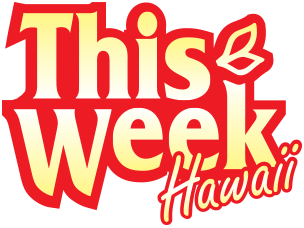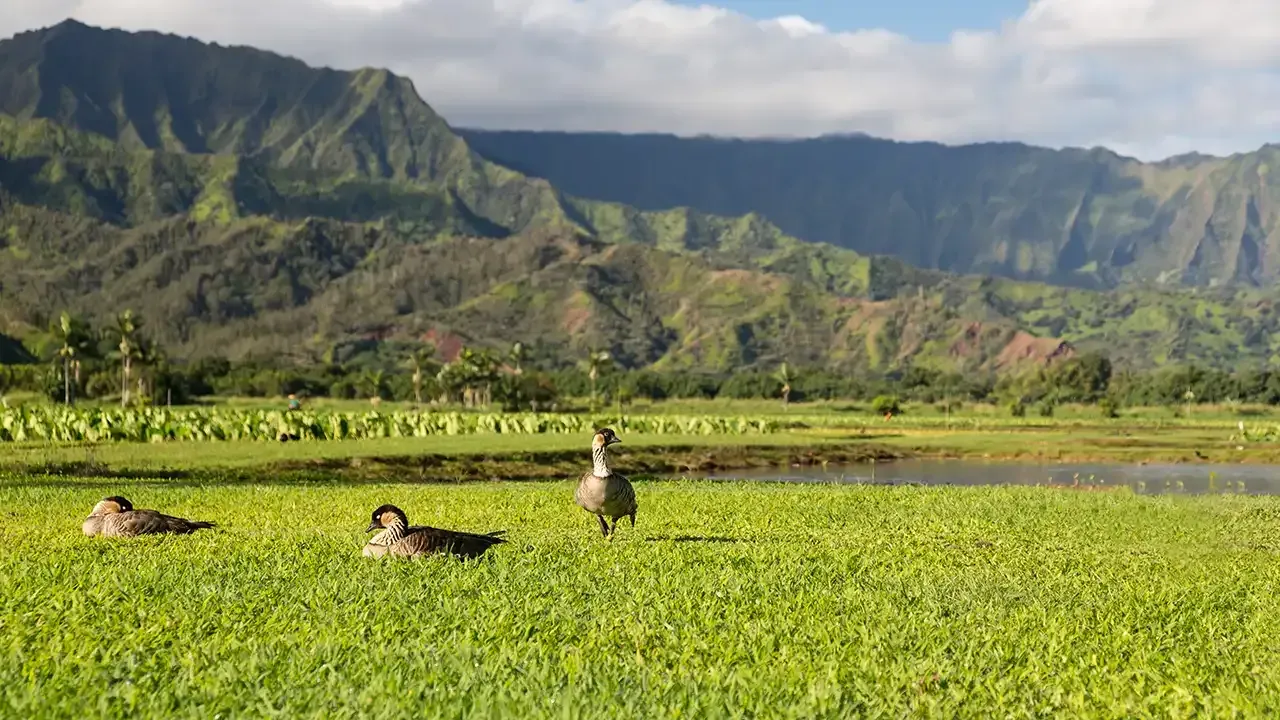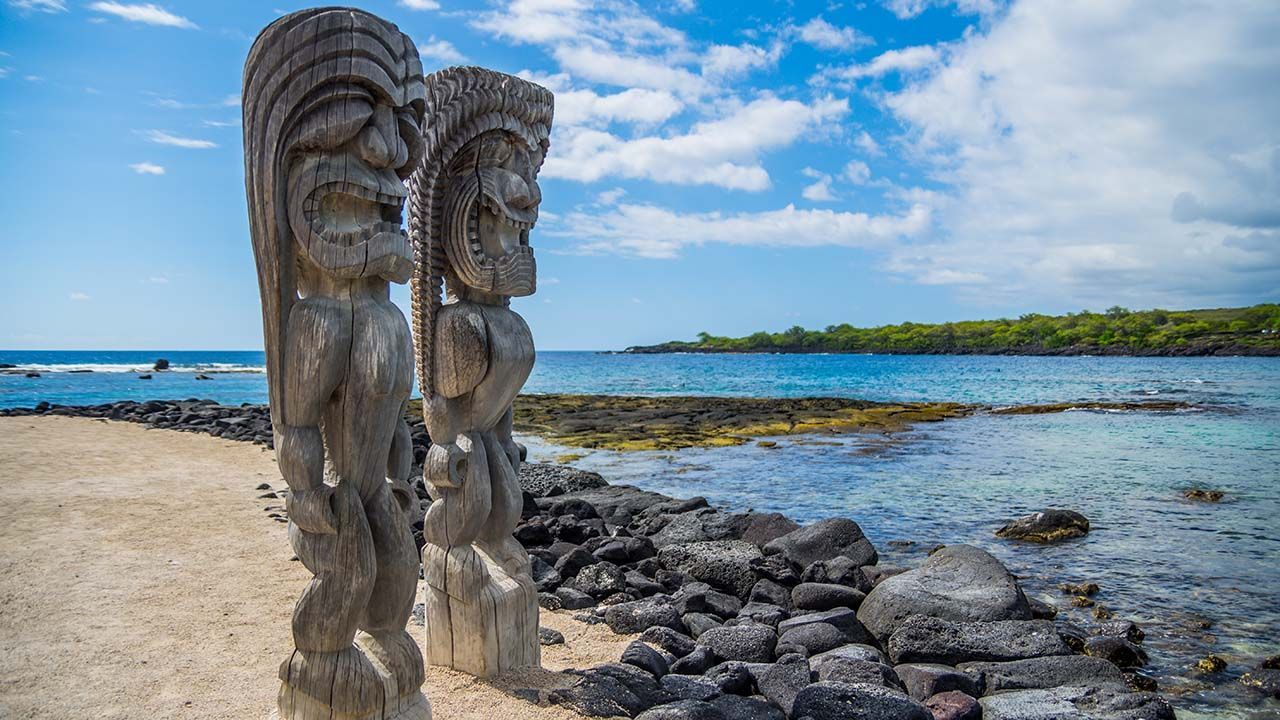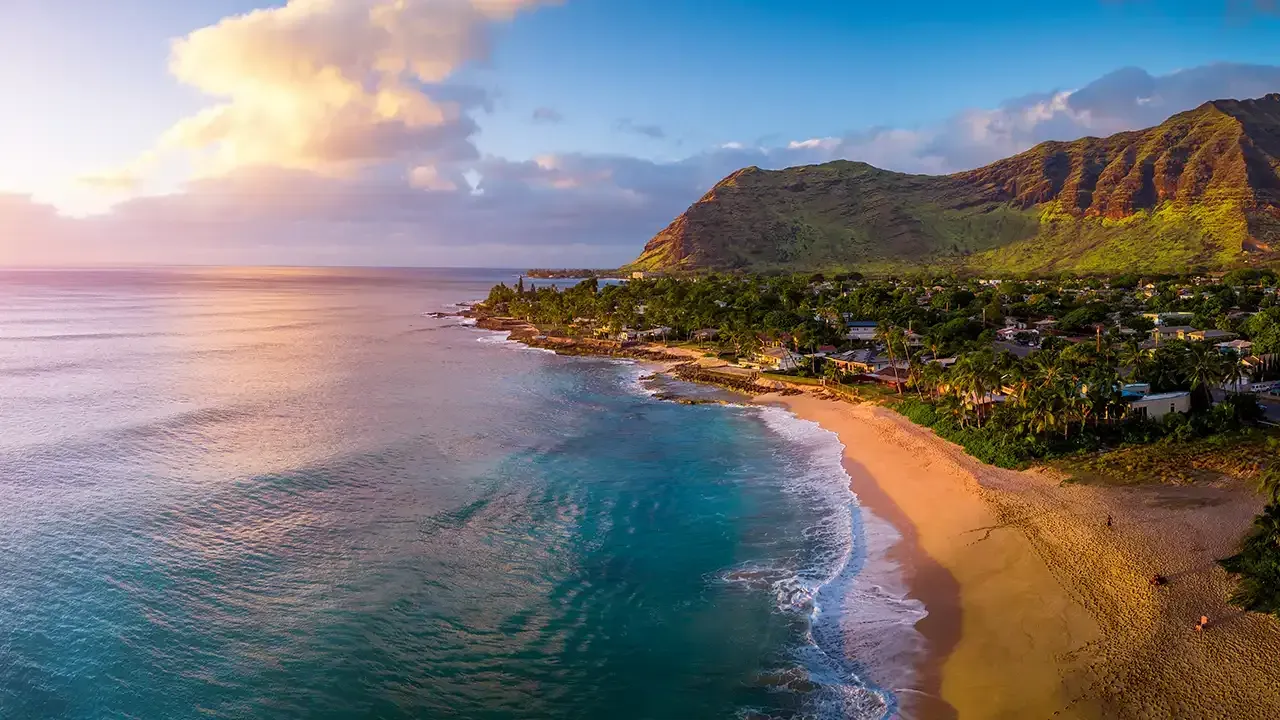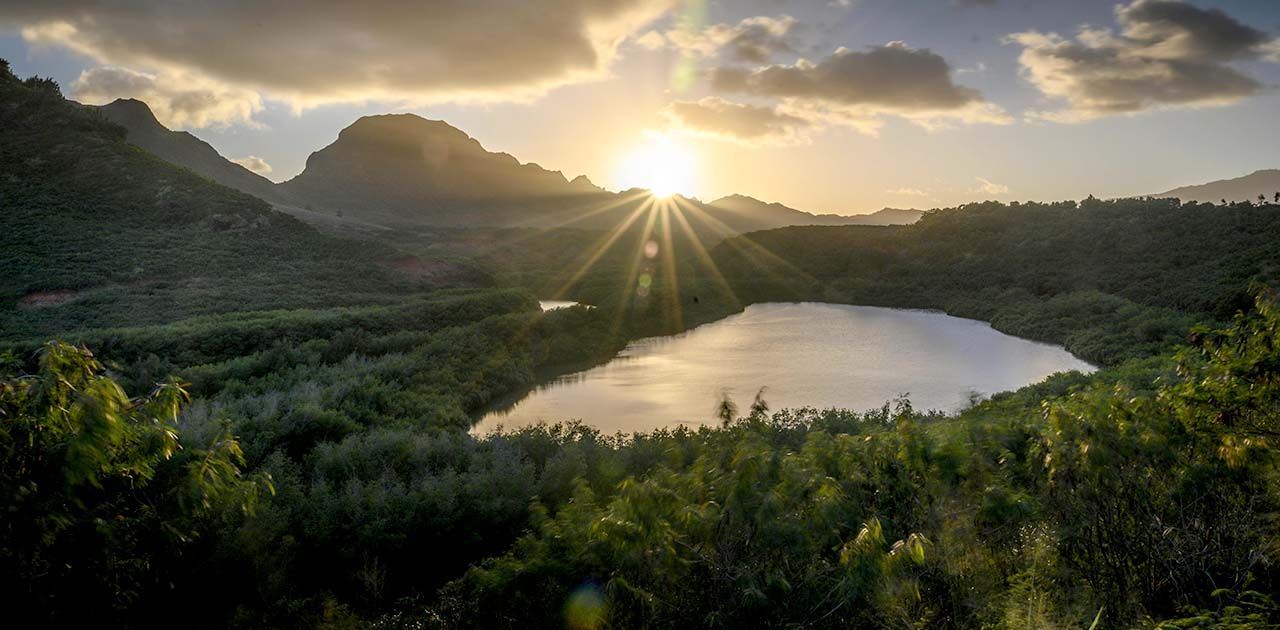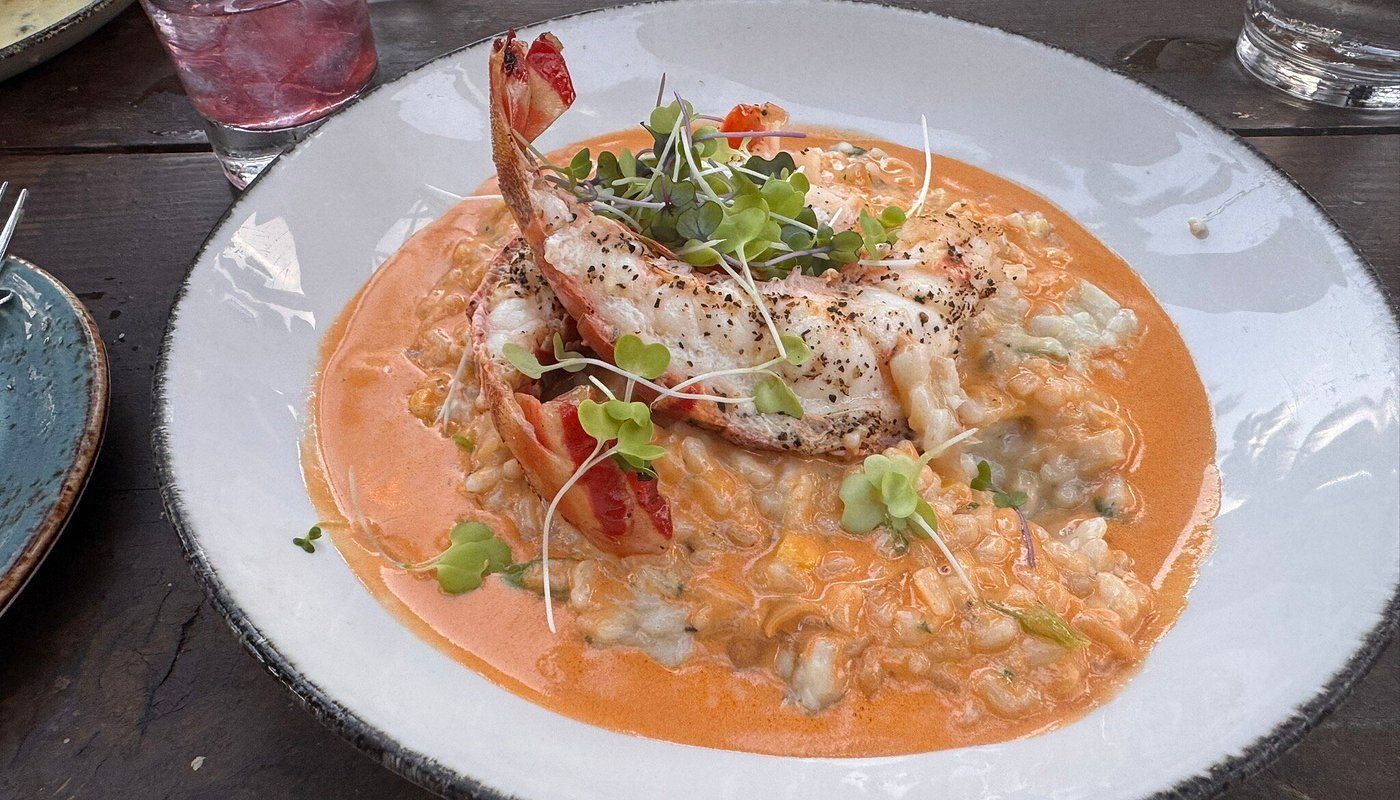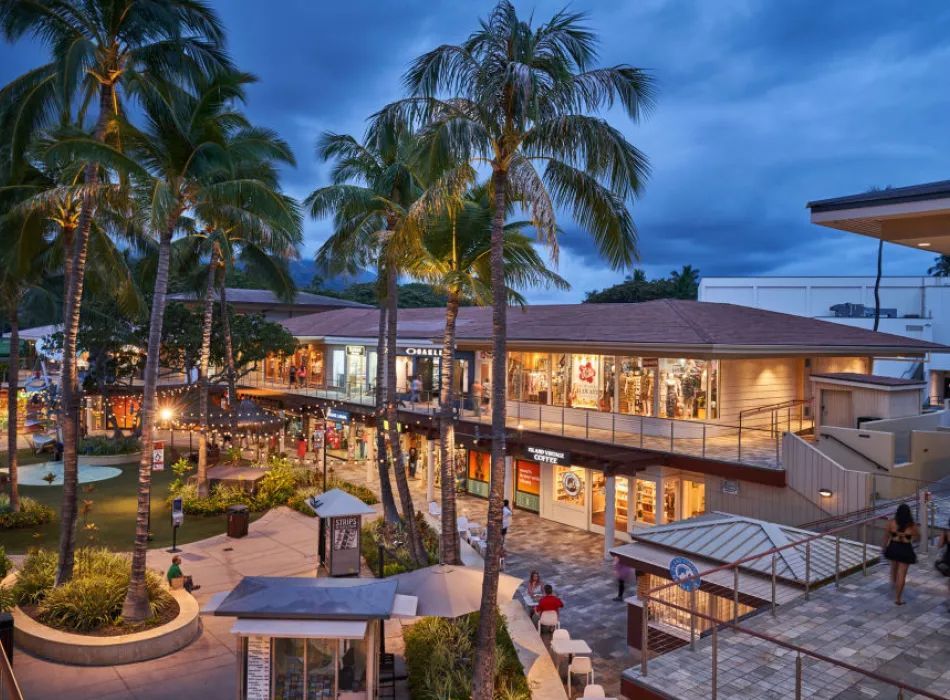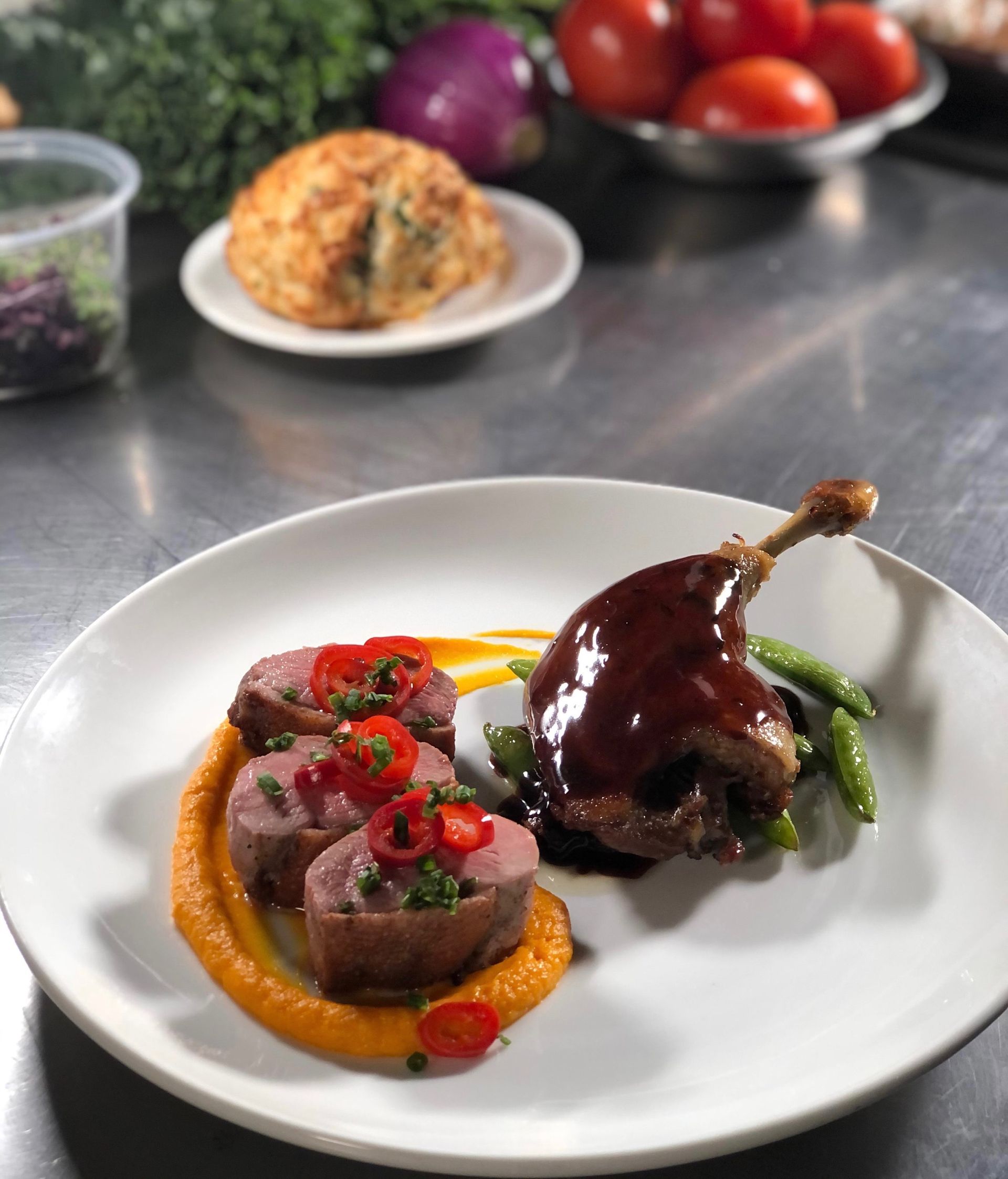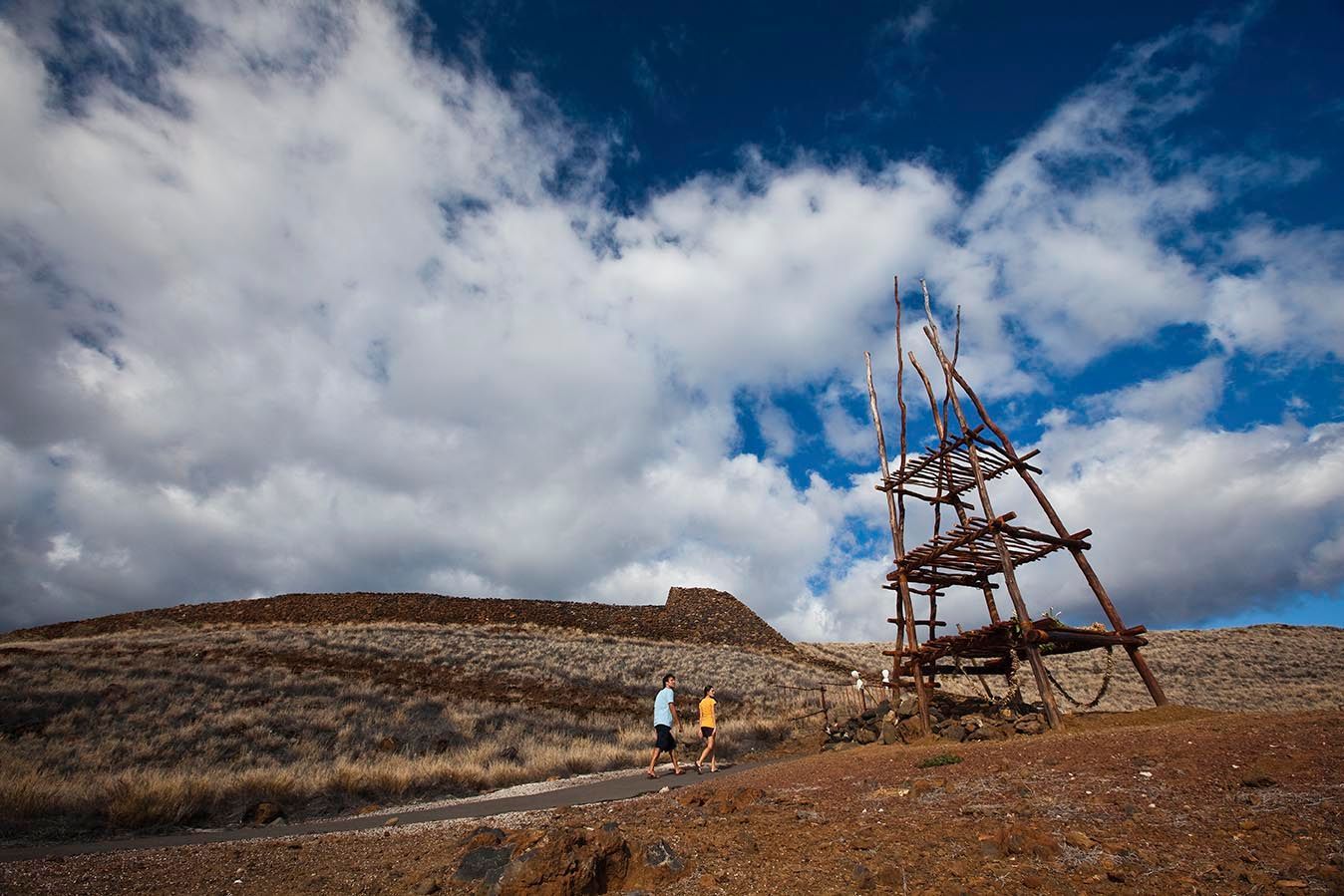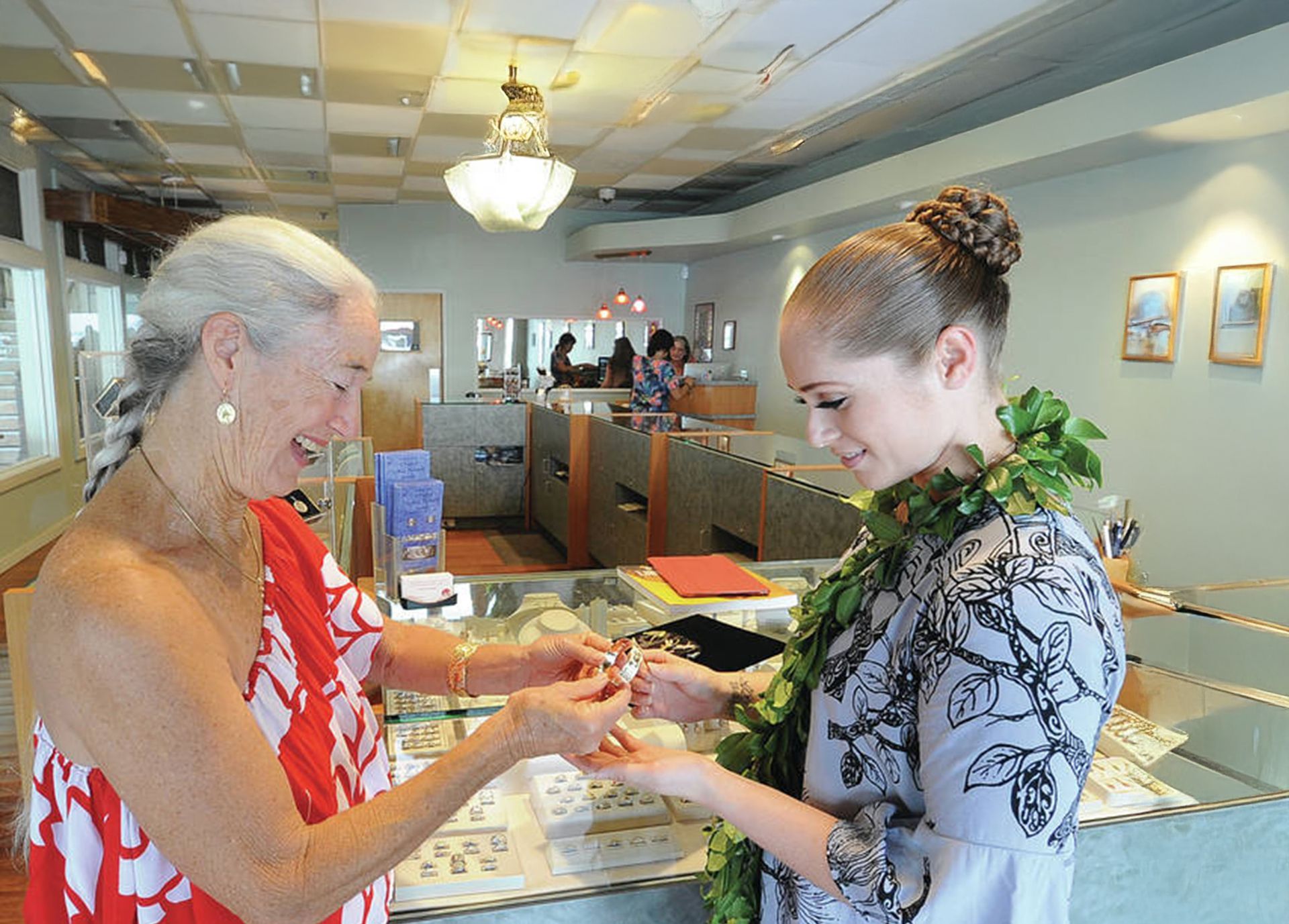Driving With Aloha In Hawaii: Etiquette & What You Should Know
Driving in Hawaii can feel distinctly different from driving on the mainland. The roads wind through lush landscapes, traffic laws can vary by island, and local etiquette plays a significant role in the driving experience.
This guide covers the essentials: traffic laws, common courtesies, and tips specific to Hawaii, so you can feel confident driving in the state.
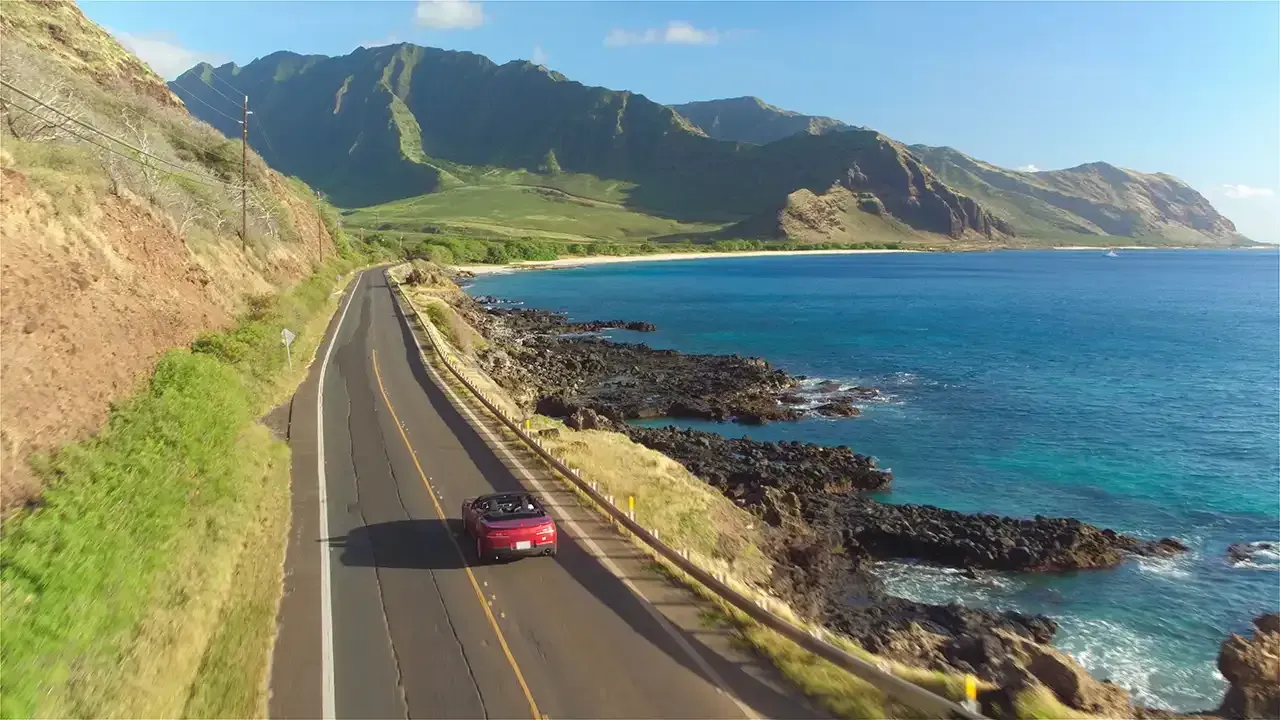
A Brief Overview Of Driving In Hawaii
The pace of driving in Hawaii tends to be slower and less aggressive than on the mainland. Honking is rare and typically reserved for emergencies, rather than being used to express frustration. In fact, lying on the horn is considered rude. You can learn more about any niche laws if you’re interested, on the official Hawaii.gov “Getting Around” page.
Patience is key. Traffic can back up in Honolulu, on Maui’s Hana Highway, or along Kauai’s single-lane bridges.
Hawaii’s speed limits are usually lower than on the mainland. Many roads are narrow, winding, or lined with cliffs. In rural areas, you might encounter single-lane bridges, tight turns, and sudden drops without guardrails. Always slow down when road conditions change, and avoid aggressive driving. Rain can make surfaces slippery and cause flash floods, especially on older pavement, so keep a safe distance from the vehicle ahead.
While driving in Hawaii is similar to driving in any other state in the U.S., it can differ slightly due to the islands' unique geography and layout.
Yielding and Right of Way
On the islands, yielding is as much about courtesy as it is about traffic laws. At one-lane bridges, common on Kauai and Maui, the rule is simple: cars already on the bridge have the right of way. Drivers then take turns letting small groups of vehicles cross in each direction. Be patient and wait for your turn!
Pedestrians always have the right of way at crosswalks. You’ll also want to slow down when you see people gathering near a crossing, as many locals walk to nearby beaches, stores, or bus stops.
Passing and Pulling Over
Passing is limited in Hawaii, especially on rural two-lane highways. If a line of cars builds up behind you and you’re driving below the speed limit, it’s courteous to pull over when it’s safe to let them pass. Locals appreciate this small gesture, and it helps keep traffic flowing.
On mountain roads, you may also encounter drivers going much faster or slower than you. Stay in your lane, use turnouts when available, and avoid taking unnecessary risks. There are often blind curves and limited visibility.
Parking Rules
Parking is tightly regulated in Hawaii. Never park in front of driveways, on sidewalks, or in areas marked with “No Parking” signs.
Beachfront parking can be limited, especially at popular spots like Hanauma Bay or Laniakea Beach. Arrive early if you’re heading to a busy location, and avoid blocking residents’ access to their homes.
Pay attention to colored curbs:
- Red: No parking, stopping, or standing.
- Yellow: Loading and unloading only.
- Green: Limited-time parking.
- Blue: Reserved for individuals with disabilities who have a placard.
Illegally parked cars are often ticketed or towed, especially in tourist-heavy areas.
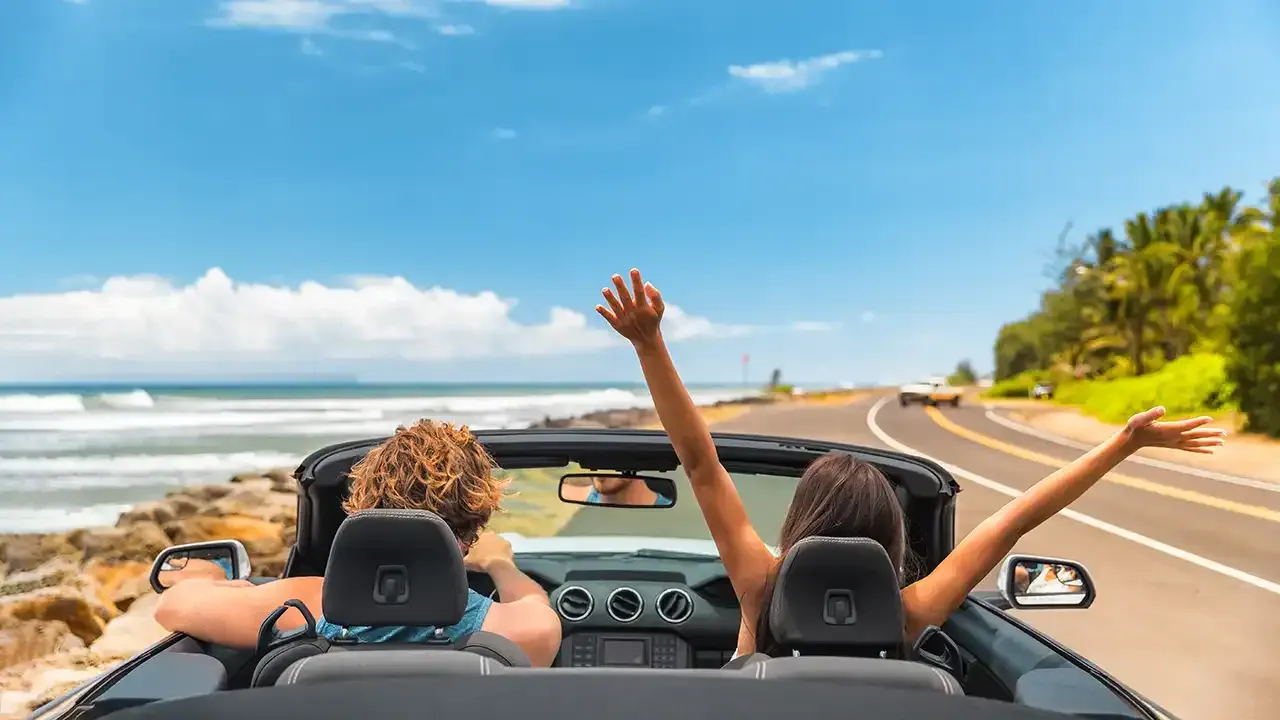
Scenic Roads and Tourist Cautions
Many visitors are tempted to pull over suddenly when they see a beautiful view. Avoid stopping in unsafe places, such as blind corners or narrow shoulders. If you want to take photos, look for designated pullouts. Some areas have dedicated lookout points with designated parking, allowing you to safely enjoy the view without disrupting traffic.
On roads like Maui’s Hana Highway or Kauai’s Kuhio Highway, curves are frequent and shoulders are limited. Drive at a steady pace, and don’t block traffic to admire the scenery.
Wildlife and Livestock on the Road
Hawaii’s rural roads can bring unexpected encounters with animals. On the Big Island and Kauai, it’s common to see wild boars, chickens, or goats wandering near the road. On the slopes of Mauna Kea or Haleakalā, you may encounter cattle crossing.
Drive cautiously in these areas, especially at night, and use your high beams only when it is safe to do so. Watch for signs indicating areas where wildlife crossings are frequent and stay alert for animals near the road.
Island-Specific Tips
- Oahu: Expect heavy traffic in Honolulu and along the North Shore, especially during rush hour. Plan for significant delays when heading toward Honolulu in the morning (6–9 a.m.) and leaving the city in the afternoon (3–6 p.m.). Major routes like H-1, H-2, and Nimitz Highway often see the worst congestion during these peak travel windows. Parking in Waikiki is also limited, so use paid garages or designated lots whenever possible.
- Maui: The Hana Highway requires patience. With over 600 curves and nearly 60 one-lane bridges, it means slow progress. Always yield and be courteous to locals commuting on the same road. Expect traffic heading toward Kahului in the morning (6–9 AM) and out of Kahului in the afternoon (3–6 PM).
- Kauai: Single-lane bridges along Kuhio Highway require alternating traffic. Don’t rush; locals may let more than one car through at a time, and visitors are expected to follow the same courtesy. Expect traffic heading toward Līhuʻe in the morning (6–9 AM) and out of Līhuʻe in the afternoon (3–6 PM)
- Big Island: Distances between towns are much greater than on other islands. Gas stations can be scarce, especially on the Saddle Road and in rural areas, so be sure to fill up before long drives.
Driving and Alcohol
Hawaii, just like every other state, has a zero-tolerance policy for driving under the influence. The legal blood alcohol concentration (BAC) limit is 0.08% for adults and 0.02% for drivers under 21.
Hawaii enforces strict impaired driving laws and does not distinguish between DUI and DWI: they’re treated as the same offense under state law. DUI checkpoints are common, especially during holidays, and penalties can include license suspension, hefty fines, and even jail time. If you plan to drink, always use a taxi, rideshare service, or designate a sober driver.
Respecting Local Communities
Driving etiquette in Hawaii isn’t just about rules; it’s also about respect. Many roads pass through small towns and residential areas.
Speeding, loud music, or blocking driveways can frustrate locals and contribute to tension between visitors and residents. Drive mindfully and remember that you’re a guest on the islands.
FAQs About Driving in Hawaii
Do I need an International Driver’s License in Hawaii?
No. A valid U.S. driver’s license is all you need. International visitors can drive with a license from their home country, though an International Driving Permit is recommended for easier verification.
Is gas more expensive in Hawaii?
Yes. Fuel costs are higher than on the mainland due to shipping expenses. Prices vary by island, with Oahu typically being the least expensive and Lanai the highest.
Can I drive barefoot in Hawaii?
Yes. Driving barefoot is legal in Hawaii, though closed-toe shoes are safer for longer drives or hikes.
Are car rentals easy to find on all islands?
Most major airports offer car rentals. However, during peak travel seasons, vehicles can sell out quickly. Booking in advance is strongly recommended.
Are there toll roads in Hawaii?
No. Hawaii does not have toll roads or bridges.
Be Patient When Driving in Hawaii
Driving in Hawaii requires a balance of practical awareness and cultural courtesy. By following speed limits, respecting local customs, and practicing patience, you’ll not only stay safe but also contribute to the welcoming spirit of the islands.
Whether you’re navigating Oahu’s freeways, Maui’s winding roads, or Kauai’s single-lane bridges, keeping these tips in mind will ensure your time behind the wheel is smooth, safe, and respectful.
